There’s a feeling you get in the Nordic countries that you don’t find anywhere else on Earth. It’s in the particular silence of a snow-covered Finnish forest, the impossibly long summer twilight that paints the Stockholm archipelago in shades of pink and gold, and the crisp, clean air that seems to sharpen the senses as you stand before a thundering Icelandic waterfall.
For too long, this part of the world has been defined by clichés: Vikings, minimalist furniture, and the Northern Lights. While those things are part of the story, they are merely the opening chapter. The true Nordic experience is a journey of profound contrasts. It’s a place where ancient sagas meet futuristic architecture, where cosy, candlelit winters give way to exuberant, sun-drenched summers, and where a deep reverence for nature is woven into the fabric of modern, progressive life.
This isn’t just a checklist of places to see. This is a guide to understanding and experiencing a region that is less a destination and more a state of mind. It’s for the traveller who wants to go beyond the surface, to understand the difference between hygge and koselig, to taste the New Nordic cuisine that changed the culinary world, and to feel the immense, humbling power of its landscapes.
Contents
- 0.1 First, Who’s Who? Understanding the Nordic Landscape
- 0.2 When to Go: A Tale of Two Seasons
- 0.3 Guide to Each Nation: Autumn & Winter Focus
- 0.4 The Icons: Unforgettable Nordic Experiences
- 0.5 A Taste of the Nordics: The New Nordic Kitchen and Beyond
- 0.6 Practicalities: Your Nordic Travel Toolkit
- 0.7 Final Thoughts: A Journey Inward
- 1 Are You Planning Your Next Trip? Here’s What I Use
First, Who’s Who? Understanding the Nordic Landscape
It’s a common point of confusion, so let’s clear it up. Scandinavia technically refers to Denmark, Norway, and Sweden. The Nordic Region is the broader term, including those three plus Finland and Iceland, as well as the autonomous territories of the Faroe Islands, Greenland, and Åland. For this guide, we’ll focus on the five major sovereign states.
Each country has a distinct personality, a unique flavour that sets it apart.
- Denmark: The Vibe: The epicentre of effortless cool, design, and culinary innovation.
- Best for: Design lovers, foodies, city explorers, and cyclists.
- Don’t-Miss Experience: Embracing the concept of hygge (cosiness and contentment) in a candlelit Copenhagen café after a day of exploring castles and canals.
- Sweden: The Vibe: Stylish, sophisticated, and perfectly balanced between vibrant city life and serene natural beauty.
- Best for: History buffs, fashion-forward travellers, and nature lovers who enjoy accessibility.
- Don’t-Miss Experience: Getting lost in the cobblestone streets of Stockholm’s Gamla Stan (Old Town) before escaping to the tranquil archipelago of 30,000 islands just a ferry ride away.
- Norway: The Vibe: Nature in God-mode. A land of epic, dramatic landscapes that will leave you speechless.
- Best for: Outdoor adventurers, hikers, road-trippers, and anyone seeking awe-inspiring scenery.
- Don’t-Miss Experience: Sailing through the deep, majestic waters of the UNESCO-listed Nærøyfjord or Geirangerfjord, with waterfalls cascading down sheer mountain cliffs on either side.
- Finland:The Vibe: A quiet, soulful, and deeply resilient nation where design is functional, and nature is a way of life.
- Best for: Introverts, sauna lovers, design aficionados, and those seeking true wilderness.
- Don’t-Miss Experience: Participating in the sacred ritual of a traditional Finnish sauna—preferably one on a lake—followed by a bracing (and life-affirming) plunge into the cold water.
- Iceland:The Vibe: A raw, elemental, and otherworldly island where the earth is still being born.
- Best for: Adventurous road-trippers, photographers, geology nerds, and anyone with a love for the wild and dramatic.
- Don’t-Miss Experience: Driving the Ring Road and witnessing the full spectrum of nature’s power: glaciers, volcanoes, black sand beaches, and geothermal lagoons.
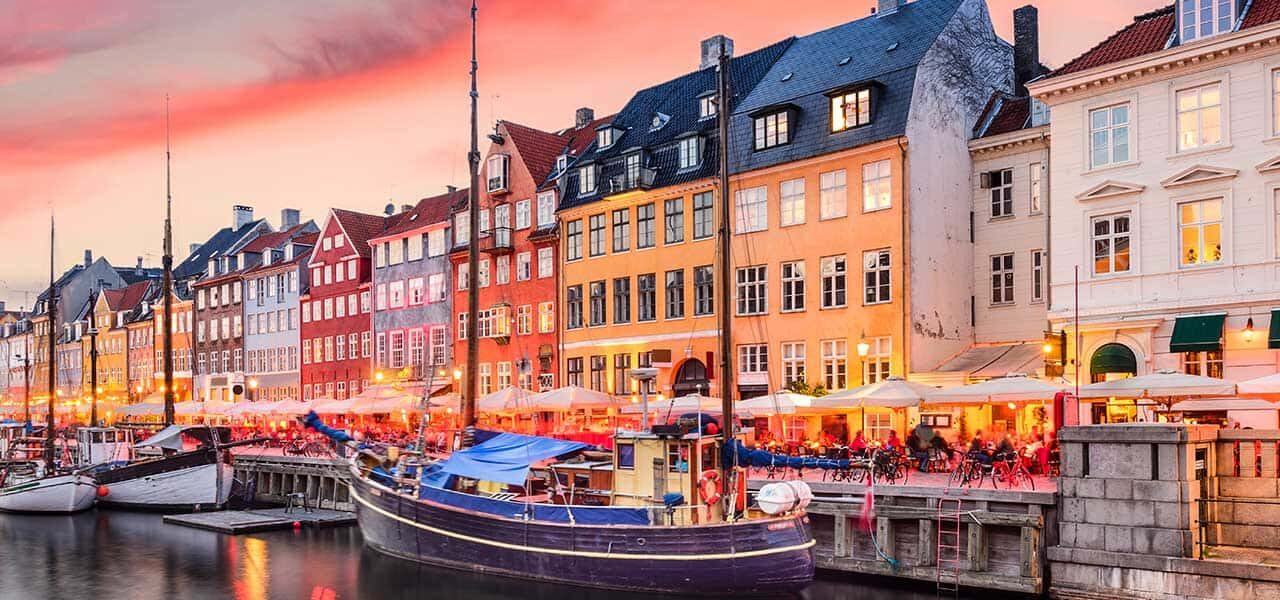
When to Go: A Tale of Two Seasons
Choosing when to visit the Nordics is the single most important decision you’ll make, as it will fundamentally shape your entire experience. There is no “best” time, only the time that’s best for the story you want to live.
Winter (November – March): The Season of Cozy & Magic
Winter in the Nordics is not something to be endured; it’s something to be embraced. It’s a season of deep, velvety nights, snow-hushed landscapes, and a collective retreat indoors to the warmth of fireplaces and candlelight.
- The Main Event: The Northern Lights (Aurora Borealis): This is the primary draw for many winter visitors. To see the sky dance with ethereal ribbons of green, purple, and white is a core memory in the making.
- Best Places to See Them: Northern Norway (Tromsø, Lofoten Islands), Swedish and Finnish Lapland (Abisko, Rovaniemi), and almost anywhere in Iceland away from city lights.
- Pro Tip: Go between late September and late March. Maximize your chances by booking a multi-night stay in a dedicated area, using tracking apps, and being prepared to stay up late.
- What You’ll Do: Dog sledding across frozen lakes, visiting Christmas markets in Copenhagen or Stockholm, staying in a glass igloo in Finland, snowmobiling in the Arctic, and soaking in Iceland’s geothermal hot springs while snow falls around you.
Summer (June – August): The Season of Endless Light & Energy
Summer is the Nordic region’s glorious, energetic alter ego. The sun barely sets, infusing the land and its people with a vibrant, celebratory energy. The world moves outdoors to parks, islands, and hiking trails.
- The Main Event: The Midnight Sun: North of the Arctic Circle, the sun doesn’t set at all for several weeks. In the southern capitals, it dips below the horizon for only a few hours, creating a prolonged, magical twilight that lasts all night.
- Best Places to Experience It: The Lofoten Islands in Norway, anywhere in Lapland, and all of Iceland.
- What You’ll Do: Hiking Norway’s famous trails like Trolltunga or Preikestolen, celebrating Midsummer in Sweden, exploring the thousands of islands in the Stockholm and Finnish archipelagos, driving Iceland’s Ring Road in 24-hour daylight, and enjoying outdoor festivals and café life in the capitals.
Shoulder Seasons (April-May & September-October): These are the savvy traveller’s secret. You’ll find fewer crowds, lower prices, and a beautiful transition of seasons—from the spring thaw and blooming flowers to the spectacular autumn foliage.
Guide to Each Nation: Autumn & Winter Focus
With the coming months in mind, here is a detailed look at what to do, where to stay, and how to experience the best of each country.
Denmark: The Kingdom of Cosiness and Cool
As the days shorten, Denmark doesn’t retreat; it perfects the art of hygge. The entire country seems to lean into the season, with candles flickering in every window and a palpable sense of warmth and togetherness.
Must-Do Activities:
- Explore Copenhagen’s Christmas Markets: From mid-November, the city transforms. The world-famous Tivoli Gardens becomes a spectacular winter wonderland with thousands of lights, festive stalls, and thrilling rides. The market at the colourful Nyhavn harbour is another classic, perfect for sipping gløgg (mulled wine).
- Embrace Café Culture: Spend an afternoon in a cozy café in the Nørrebro or Vesterbro neighborhoods. This is the heart of hygge—good coffee, a delicious pastry (wienerbrød), and warm conversation.
- Visit the Castles of North Zealand: Take a day trip from Copenhagen to see Kronborg Castle (the setting of Shakespeare’s Hamlet) and the stunningly beautiful, fairytale-like Frederiksborg Castle. In the crisp autumn or winter light, they are truly magical.
- Discover Danish Design: Escape the cold in world-class museums. The Designmuseum Danmark showcases the best of Danish functionalism, while a short train ride up the coast takes you to the Louisiana Museum of Modern Art, a masterpiece of architecture with incredible sea views.
- Indulge in the Culinary Scene: Copenhagen remains a global food capital. For a classic experience, have a traditional smørrebrød (open-faced sandwich) lunch at Aamanns 1921. For dinner, explore the innovative restaurants in the Kødbyen (Meatpacking) district.
Where to Stay:
- Luxury: Nimb Hotel. Located within Tivoli Gardens, this opulent, Moorish-inspired palace offers an unparalleled luxury experience, especially during the holidays.
- Boutique: Hotel Sanders. An impeccably stylish and intimate hotel with a mid-century modern Danish aesthetic, known for its cosy rooftop conservatory and celebrity clientele.
- Design-Forward: Villa Copenhagen. A grand, former post office transformed into a conscious and stunningly designed hotel, complete with a sustainable ethos and a heated rooftop pool.
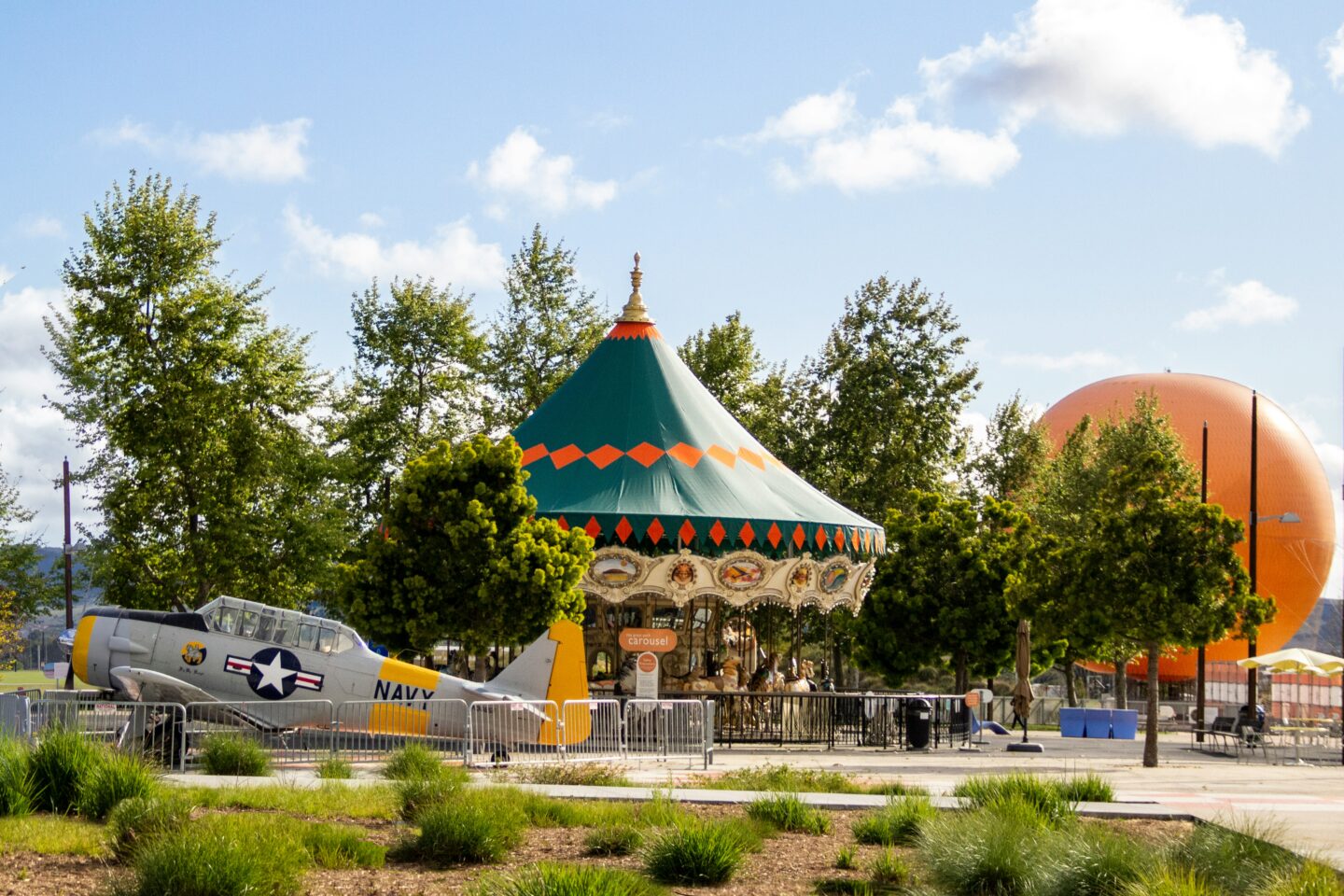
Sweden: Where Style Meets Winter Serenity
Sweden in the autumn and winter is a study in contrasts: the chic, bustling streets of Stockholm adorned with festive lights, and the profound, silent wilderness of Lapland blanketed in snow.
Must-Do Activities:
- Wander Stockholm’s Gamla Stan: The city’s medieval Old Town is enchanting under a dusting of snow. Explore its cobblestone alleys, browse the Christmas market at Stortorget square, and duck into a cellar restaurant for a hearty meal.
- Experience a Swedish Fika: More than a coffee break, fika is a cherished ritual. The best place to experience it is at a classic café like Vete-Katten for a coffee and a kanelbulle (cinnamon bun).
- Sleep on Ice in Jukkasjärvi: For a truly unforgettable night, stay at the world-famous ICEHOTEL. Rebuilt each year from ice and snow, it’s a functional work of art, complete with an ice bar and chapel.
- Chase the Aurora in Swedish Lapland: The area around Abisko National Park is scientifically one of the best places on Earth to see the Northern Lights due to its unique microclimate. Activities here include dog sledding, snowmobiling, and photography tours.
- Explore the Stockholm Archipelago: Even in winter, the archipelago’s beauty is stark and dramatic. Take a ferry with an icebreaker through the frozen sea for a unique perspective on the 30,000 islands.
Where to Stay:
- Unique Luxury: Ett Hem, Stockholm. A world-renowned, exquisitely designed townhouse hotel that feels less like a hotel and more like the stunning home of a very stylish friend.
- Iconic Experience: ICEHOTEL, Jukkasjärvi. Offers both “cold rooms” made of ice and “warm rooms” in traditional hotel buildings.
- Arctic Design: Treehotel, Harads. Stay in one of several stunning, architecturally unique “treerooms” (like The Mirrorcube or The UFO) suspended in the pine forest of Lapland.

Norway: Land of Epic Landscapes and Arctic Light
Winter is when Norway’s dramatic nature is at its most powerful and ethereal. The deep fjords are framed by snow-capped peaks, and the long nights in the north provide the perfect canvas for the Aurora Borealis.
Must-Do Activities:
- See the Northern Lights in Tromsø: Known as the “Capital of the Arctic,” Tromsø is a lively city and a major hub for all Northern Lights activities, from bus chases and fjord cruises to dog sledding and reindeer sleigh rides.
- Explore the Lofoten Islands: This iconic archipelago is breathtaking in winter, with its dramatic, jagged peaks plunging directly into the sea. The low-lying sun creates magical light for photography, and the charming red fishing cabins (rorbuer) are incredibly cozy.
- Ride the Flåm and Bergen Railways: This journey is considered one of the most beautiful train rides in the world. It takes you from the high mountain station of Myrdal down to the fjord-side village of Flåm, passing frozen waterfalls and deep valleys.
- Take a Winter Fjord Cruise: The UNESCO-listed Nærøyfjord and Geirangerfjord are just as stunning, if not more so, in winter. The crowds are gone, and the landscape is serene, silent, and majestic.
- Discover Oslo’s Art and Architecture: Explore the vibrant capital. Visit the new Munch Museum, walk on the roof of the iconic Opera House, and experience the unique “sauna raft” culture on the Oslofjord.
Where to Stay:
- Urban Elegance: Sommerro, Oslo. A beautifully restored 1930s Art Deco landmark in the Frogner district, featuring a rooftop pool, a wellness centre, and multiple restaurants.
- Arctic Adventure: Svinøya Rorbuer, Lofoten. Stay in a traditional (but modernised and cosy) fisherman’s cabin right on the water for an authentic Lofoten experience.
- Northern Lights Hub: Funken Lodge, Svalbard. For the truly adventurous, this hotel on the remote Svalbard archipelago offers incredible comfort at the top of the world.
Finland: A Journey into the Soul of Winter
Finland embraces winter with a quiet, soulful grace. This is the place to connect with pristine nature, experience unique traditions, and, of course, see Santa Claus.
Must-Do Activities:
- Master the Art of the Finnish Sauna: This is a non-negotiable cultural ritual. For the full experience, book a traditional smoke sauna on a frozen lake, and don’t be afraid to take a quick, invigorating plunge into an ice hole (avanto).
- Stay in a Glass Igloo: Sleep under the stars (and hopefully, the Northern Lights) in Finnish Lapland. Numerous resorts offer specially designed glass-roofed cabins for an unforgettable night.
- Visit Santa Claus in Rovaniemi: The “official” hometown of Santa Claus, Rovaniemi is a magical destination, especially for families. You can cross the Arctic Circle, meet Santa, and visit his post office.
- Go Dog Sledding or on a Reindeer Safari: Experience the silent beauty of the Lappish wilderness from a traditional sleigh. These tours are a peaceful and powerful way to connect with the Arctic landscape.
- Explore Helsinki’s Design District: Finland’s capital is a hub of functional design. Explore the shops and studios of the Design District, visit the stunning Oodi Central Library, and warm up in the unique Löyly sauna complex.
Where to Stay:
- Arctic Luxury: Arctic TreeHouse Hotel, Rovaniemi. Stay in stunning, Nordic-designed suites on a forested hillside, each with a panoramic window for viewing the forest and sky.
- Glass Igloo Classic: Kakslauttanen Arctic Resort, Saariselkä. One of the original and most famous glass igloo resorts, offering a quintessential Lapland experience.
- Helsinki Style: Hotel St. George, Helsinki. An elegant and sophisticated hotel in a historic building, featuring a top-rated spa and a notable private art collection.
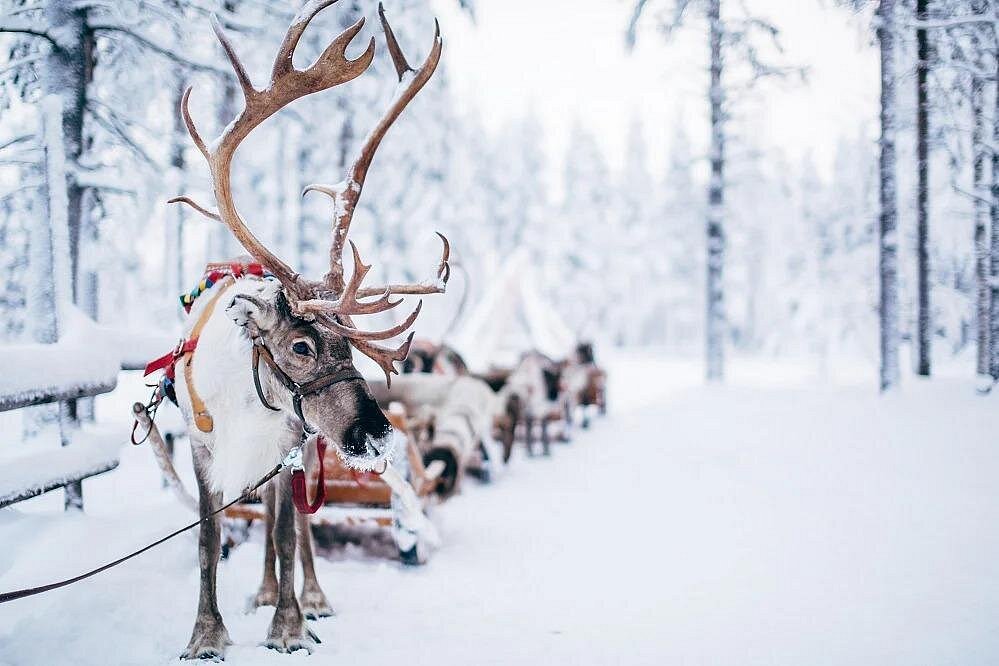
Iceland: The Land of Fire, Ice, and Auroras
Winter strips Iceland’s landscape down to its raw, elemental essentials. The contrast of black volcanic rock against white snow, blue glacier ice, and the green glow of the aurora is a photographer’s dream.
Must-Do Activities:
- Explore a Natural Ice Cave: From November to March, you can enter the surreal, sapphire-blue world of a natural ice cave within the Vatnajökull glacier. This is a truly magical, once-in-a-lifetime experience.
- Hunt the Northern Lights: With its long, dark nights, Iceland is a prime aurora destination. Head out of Reykjavík on a guided tour or drive yourself to a dark spot along the South Coast for the best views.
- Soak in Geothermal Lagoons: There is nothing better than soaking in the mineral-rich, geothermally heated waters of the Blue Lagoon or the chic Sky Lagoon while snow falls gently around you.
- Tour the South Coast: This is Iceland’s most accessible winter road trip. You’ll see the iconic waterfalls of Seljalandsfoss and Skógafoss, the black sand beach of Reynisfjara, and the Jökulsárlón glacier lagoon with its floating icebergs.
- Enjoy Reykjavík’s Cozy Culture: The world’s northernmost capital is vibrant in winter. Explore its excellent museums, cozy up in a coffee shop, enjoy the lively nightlife, and sample the world-famous Icelandic hot dog.
Where to Stay:
- Ultimate Luxury: Deplar Farm, Troll Peninsula. An exclusive, all-inclusive former sheep farm transformed into one of the world’s best adventure lodges, offering heli-skiing, aurora watching, and a world-class spa.
- Design in the City: The Reykjavik EDITION. A sophisticated and stylish hotel on the old harbor, offering fantastic city and mountain views, a high-end spa, and a vibrant social scene.
- Aurora Viewing: Hotel Rangá, South Iceland. A rural luxury hotel known for its excellent service and prime location for Northern Lights viewing. It even has its own observatory and a wake-up call service for when the aurora appears.
The Icons: Unforgettable Nordic Experiences
Beyond the cities and seasons, these are the quintessential experiences that define a trip to the Nordic region.
1. Sail Through Norway’s Fjords
The fjords are Norway’s soul, carved by ancient glaciers. To truly grasp their scale, you must be on the water. Imagine standing on the deck of a ferry, dwarfed by sheer, 1,000-meter cliffs as waterfalls thunder down into the deep, emerald-green water below. The Nærøyfjord and Geirangerfjord are the most famous, but countless others offer a similar sense of awe. The classic “Norway in a Nutshell” tour is a popular and efficient way to experience them, combining a scenic train journey on the Flåm Railway with a fjord cruise.
2. Embrace the Finnish Sauna Culture
In Finland, the sauna is not a luxury; it’s a necessity. It’s a place for physical and mental cleansing, a sacred space where conversations happen and stress melts away. The ritual is simple but profound: sit in the intense, enveloping heat (löyly), perhaps gently whipping your skin with a birch branch (vasta) to improve circulation, and then cool off. The best way is the most traditional: a plunge into a cold lake or a roll in the snow, which creates an exhilarating, full-body tingle that is incredibly addictive.
3. Drive Iceland’s Ring Road
There are few road trips in the world as epic as Iceland’s Route 1, or the Ring Road. This 1,332-kilometer (828-mile) route circumnavigates the entire island, serving as a front-row seat to the most dramatic geological show on Earth. In a single journey, you will encounter explosive geysers, colossal glaciers you can walk on, icebergs washing ashore on black sand beaches (Jökulsárlón and Diamond Beach), active volcanoes, and countless powerful waterfalls. Give yourself at least 10-14 days in the summer to do it justice.
4. Live Hygge in Copenhagen
Hygge is a Danish concept that defies direct translation but is often described as “coziness of the soul.” It’s the feeling of contentment, warmth, and togetherness. Copenhagen is the best place to experience it. You’ll find it in the warm glow of a candlelit bakery, sharing a pastry and a coffee with a friend. You’ll feel it while strolling through the charming, colorful harbor of Nyhavn or exploring the magical Tivoli Gardens amusement park, especially when it’s decorated for Christmas.
A Taste of the Nordics: The New Nordic Kitchen and Beyond
Forget the old jokes about bland food. The Nordic region has undergone a culinary revolution over the past two decades, led by Copenhagen’s Noma, which championed a philosophy of hyper-local, seasonal, and innovative cooking.
- Denmark: The birthplace of the New Nordic movement. Beyond fine dining, don’t miss smørrebrød, the iconic open-faced sandwich, elevated to an art form.
- Sweden: Embrace fika, a cherished social institution that means “to have coffee,” usually accompanied by a cinnamon bun (kanelbulle). It’s a moment to slow down and connect.
- Norway: With its vast coastline, the seafood is unparalleled. Try the fresh salmon, arctic char, and in the winter, the traditional cod dish known as skrei.
- Finland: The food is hearty and comforting, with influences from both the east and west. Look for dishes featuring reindeer, wild mushrooms, and berries like cloudberries and lingonberries.
- Iceland: Try the incredibly fresh lamb, which roams freely, and the unique Icelandic hot dog (pylsur), a cult favorite for a reason.
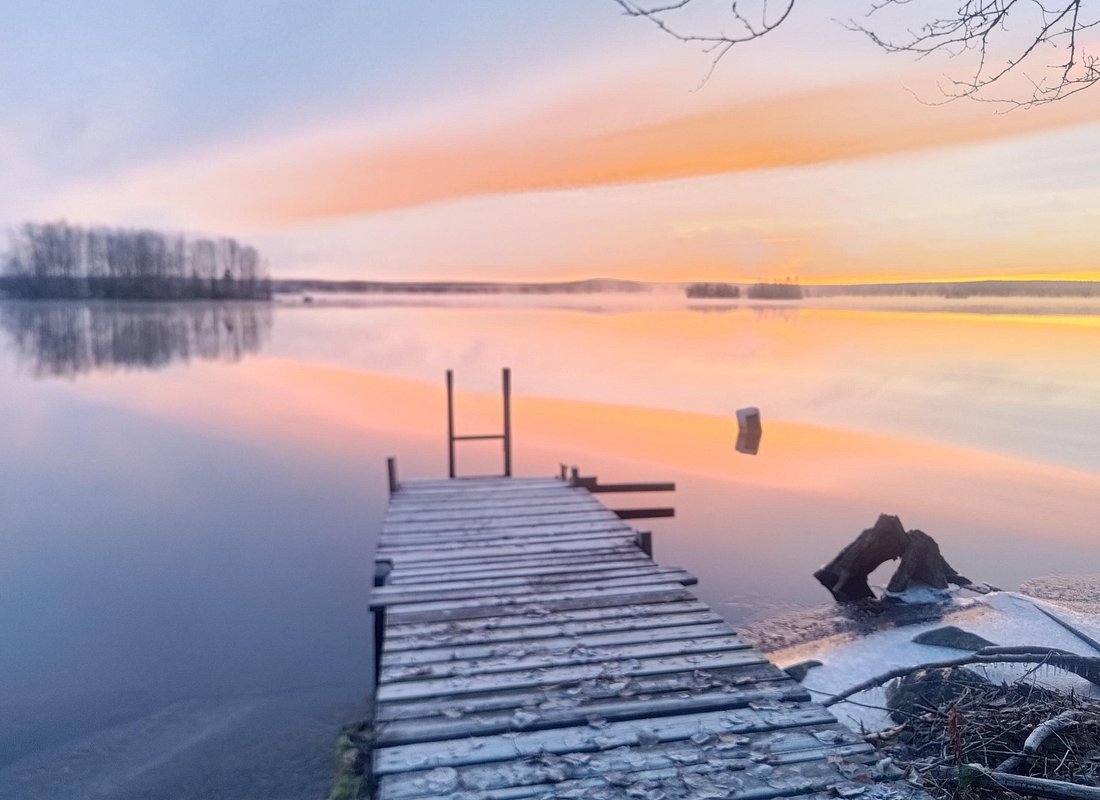
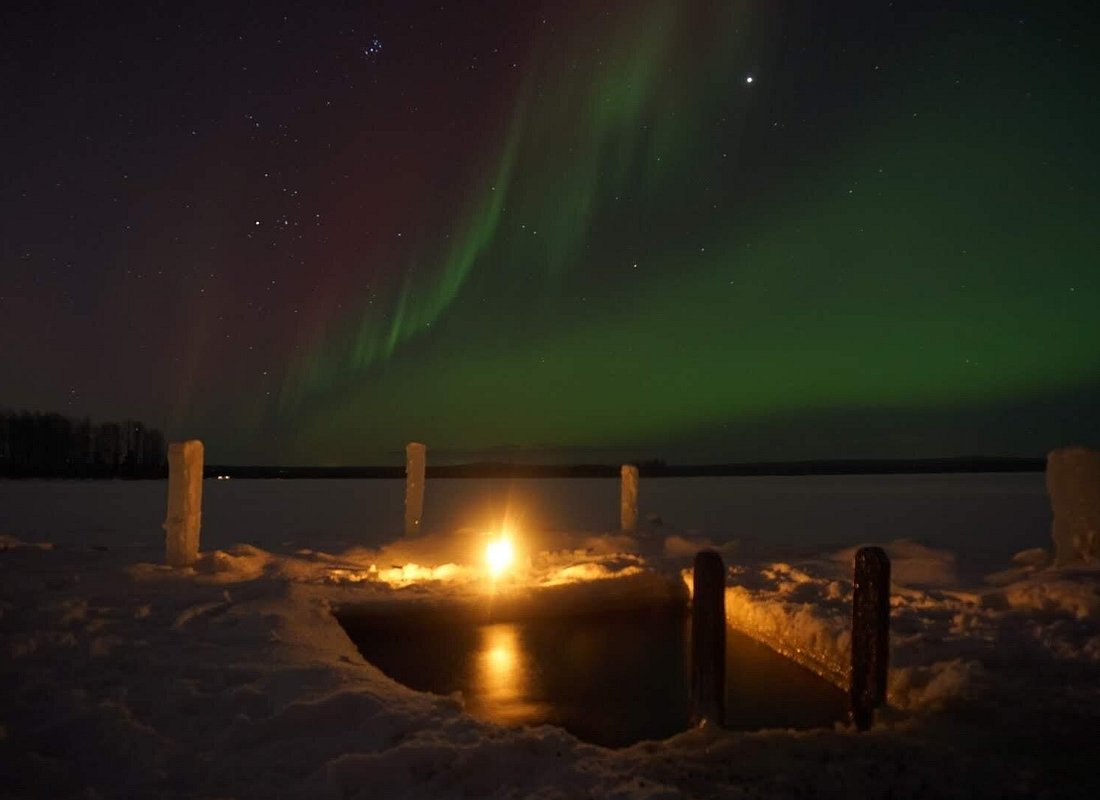

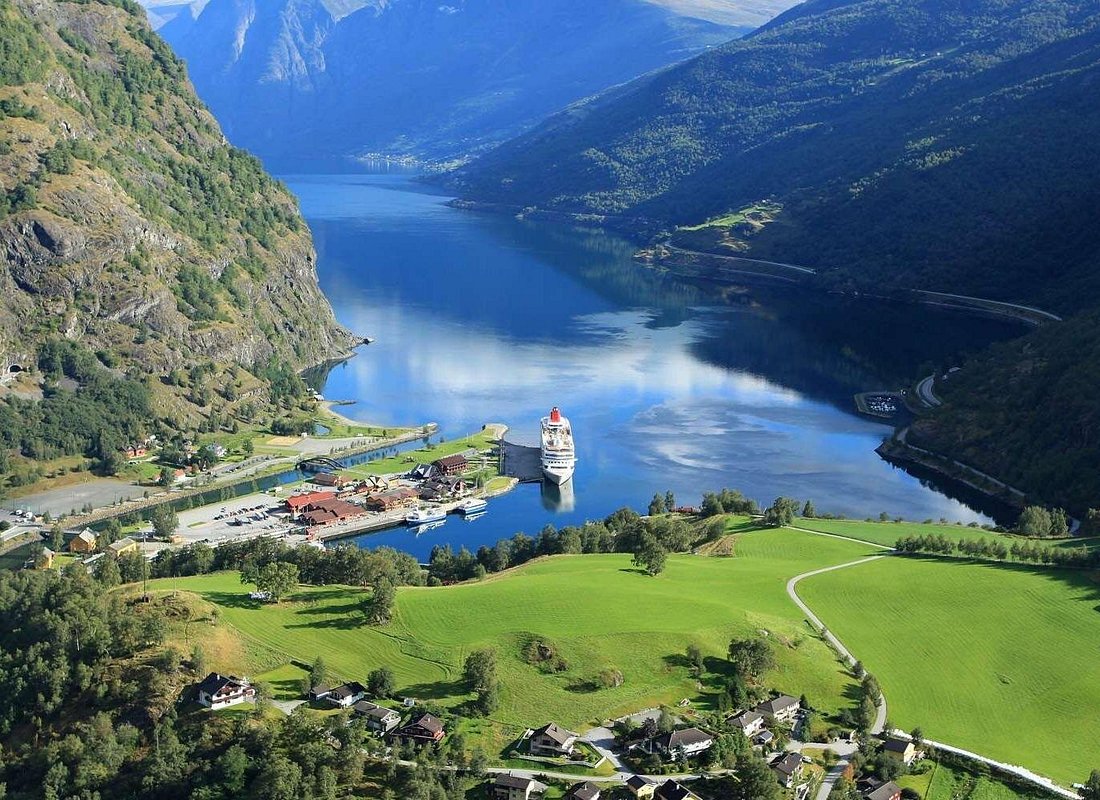

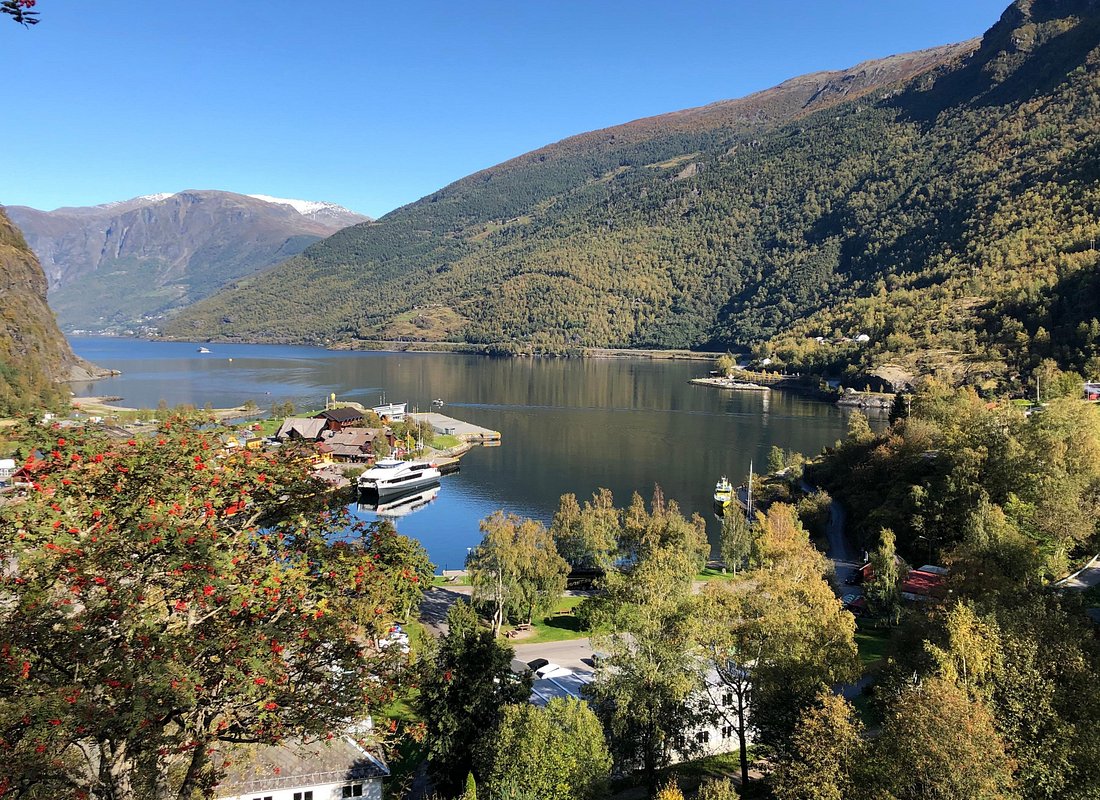
Practicalities: Your Nordic Travel Toolkit
Navigating the Nordics is straightforward, but a little planning goes a long way, especially when it comes to your budget.
Getting Around
- By Air: For long distances between capitals (e.g., Stockholm to Tromsø), flying is the most practical option. SAS and Norwegian are the main regional carriers.
- By Train: The train systems are incredibly efficient, clean, and scenic. The journey from Oslo to Bergen in Norway is consistently ranked among the world’s most beautiful train rides.
- By Ferry: Ferries are a way of life, connecting the capitals (like Helsinki to Stockholm) and serving the vast archipelagos and coastal fjord communities.
- By Car: Renting a car is the best way to experience the rural landscapes of Norway and is absolutely essential for exploring Iceland.
What to Pack
This is critical. There’s a Nordic saying: “There’s no such thing as bad weather, only bad clothing.”
- For Winter:
- Layers are everything. Start with a merino wool base layer (top and bottom).
- Add a mid-layer of fleece or down.
- Finish with a waterproof and windproof outer shell (jacket and pants).
- Insulated, waterproof boots with good grip are non-negotiable.
- Wool socks, a warm hat, gloves/mittens, and a scarf or buff are essential.
- For Summer:
- Still pack layers! Even in summer, evenings can be cool, and the weather can change quickly.
- A waterproof and windproof jacket is a must.
- Comfortable walking shoes or hiking boots.
- Pack a mix of t-shirts, sweaters, and pants.
- Don’t forget sunglasses and an eye mask to help you sleep during the bright summer nights.
Budgeting: The Elephant in the Room
Yes, the Nordic region is expensive. However, it is possible to visit without bankrupting yourself.
- Eat Smart: Take advantage of lunch specials (dagens rätt in Sweden), which are much cheaper than dinner. Self-catering by shopping at supermarkets like REMA 1000, Netto, or Bonus will save you a fortune.
- Limit Alcohol: Alcohol is heavily taxed and very expensive at bars and restaurants. If you want to drink, consider buying from the state-run liquor stores (Vinmonopolet, Systembolaget, etc.).
- Use Public Transport: City transportation is excellent. Consider buying a multi-day pass.
- Stay Smart: Look for guesthouses, Airbnb rooms, or even traditional cabins (hytte in Norway, mökki in Finland) for a more affordable and authentic experience.
- Embrace Nature: The best things—hiking, exploring parks, and witnessing the Northern Lights or Midnight Sun—are often free.
Final Thoughts: A Journey Inward
A trip to the Nordic region is as much an internal journey as it is an external one. The vast, quiet landscapes encourage introspection. The thoughtful design inspires an appreciation for simplicity and function. The distinct seasons remind you of nature’s powerful rhythms.
You will leave with more than just photos of stunning scenery. You will leave with a feeling of warmth in the face of cold, of light in the face of darkness, and of a deep, quiet connection to a corner of the world that does things its own remarkable way.
Also check out No Holiday Plans? No Problem: A Guide to the Best Winter Getaways
Are You Planning Your Next Trip? Here’s What I Use
These are the tools I rely on to make every trip smoother, safer, and more meaningful. If you use the links below, I may earn a small commission at no extra cost to you. Thank you for supporting this blog and my journey as a full-time traveller 💜
1. Learn the Local Language
I use Babbel to practice Spanish, French, and Portuguese while travelling. The app makes it so easy to learn useful phrases on the go.
2. Travel Insurance is a Must
I never leave home without SafetyWing — they’re affordable and ideal for frequent travellers or digital nomads.
3. Book Your Tours & Experiences
For unique local tours and must-see experiences, I use:
→ Viator
→ Get Your Guide
4. Always Stay Connected
No matter where I go, Keepgo helps me stay connected with international data SIMs and eSIMs that actually work. A lifesaver when Wi-Fi fails!
5. Organize Your Itinerary
I use Tripsy to plan and store my itineraries, documents, and bookings in one clean app. It’s perfect for keeping track of everything in one place.
Until next time, travel softly,
Destiny 💜